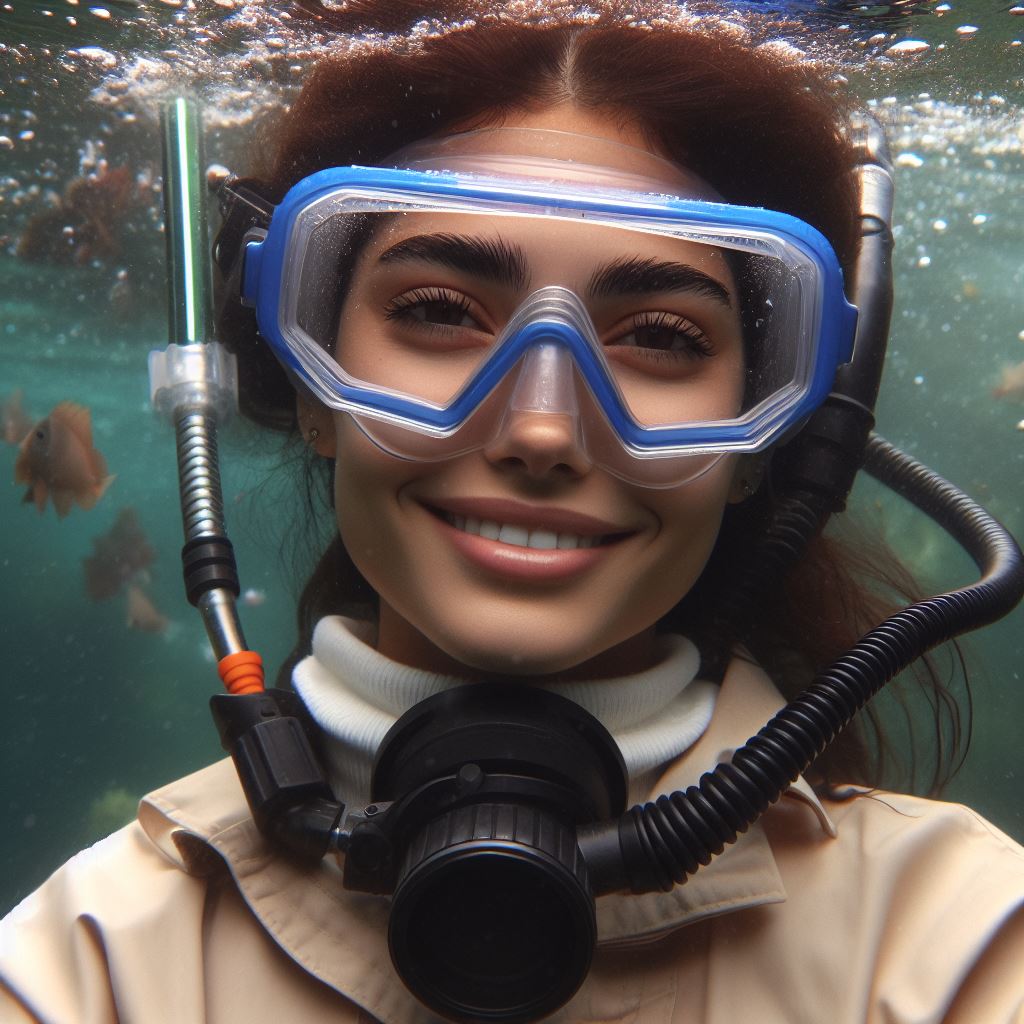Introduction
Welcome to a journey through New Zealand’s captivating marine ecosystems, teeming with unparalleled biodiversity and significance.
In this blog post, we aim to delve into the depths of these unique habitats.
New Zealand boasts an extraordinary range of marine environments, from coastal shores to deep ocean trenches.
These ecosystems support a vast array of marine life, from microscopic plankton to majestic whales.
The significance of these ecosystems extends beyond their ecological value; they also provide cultural and economic benefits.
Maori culture, in particular, has a deep connection with the marine environment, influencing traditions and practices.
Furthermore, these ecosystems contribute significantly to New Zealand’s economy through fishing, tourism, and recreation.
However, these invaluable habitats face various threats, including pollution, climate change, and overfishing.
Understanding and preserving these ecosystems is crucial for ensuring their continued health and resilience.
Throughout this blog post, we will explore the intricacies of New Zealand’s marine ecosystems.
We will analyze the factors shaping their diversity, resilience, and vulnerability.
By gaining insights into these ecosystems, we can better appreciate their beauty and importance.
Join us on this journey as we uncover the wonders of New Zealand’s marine world.
Overview of NZ’s Marine Ecosystems
Geographical location and characteristics of New Zealand
New Zealand lies in the southwestern Pacific Ocean, comprising two main islands, the North Island and the South Island, along with numerous smaller islands.
Its geographical location makes it an isolated landmass with unique flora and fauna.
Personalized Career Consulting
Unlock your potential with expert career advice tailored to your goals. Get personalized guidance and actionable steps toward your dream career in New Zealand.
Get StartedThe country’s landscape is diverse, ranging from snow-capped mountains and rugged coastlines to lush forests and fertile plains.
This diversity in terrain contributes to the richness of its marine ecosystems, providing a variety of habitats for marine life to thrive.
The country’s extensive coastline and diverse ecosystem types
New Zealand boasts a coastline that stretches over 15,000 kilometers, making it one of the longest coastlines in the world relative to its land area.
Along this coastline, a wide range of ecosystems can be found, including sandy beaches, rocky shores, estuaries, mangrove forests, and coastal dunes.
Each of these ecosystems supports a unique array of marine species, from shellfish and crustaceans to fish and marine mammals.
The diversity of ecosystem types contributes to the overall richness and complexity of New Zealand’s marine environment.
Notable marine areas like Fiordland, Hauraki Gulf, and the Great Barrier Reef
Fiordland, located in the southwest corner of the South Island, is renowned for its stunning fjords, carved by glaciers over millions of years.
These deep, narrow inlets are home to a wealth of marine life, including seals, dolphins, whales, and a variety of fish species.
The pristine waters of Fiordland provide important breeding and feeding grounds for many marine species, making it a biodiversity hotspot.
The Hauraki Gulf, situated off the coast of Auckland in the North Island, is characterized by its numerous islands, sandy beaches, and clear blue waters.
This marine area supports a diverse range of habitats, from seagrass beds and rocky reefs to open ocean waters.
It is home to a variety of marine species, including bottlenose dolphins, Bryde’s whales, and penguins.
The Hauraki Gulf is also a popular destination for recreational activities such as boating, fishing, and diving.
The Great Barrier Reef, located off the northeast coast of New Zealand, is the world’s largest coral reef system and a UNESCO World Heritage Site.
Transform Your Career with a Professional CV and Cover Letter
Stand out to employers with an ATS-optimized resume and tailored cover letter designed to match your dream role. Let us craft your job application materials for success!
Get StartedStretching over 2,300 kilometers, this reef ecosystem is home to an incredible diversity of marine life, including thousands of species of fish, corals, mollusks, and other invertebrates.
The Great Barrier Reef is not only a hotspot for biodiversity but also a critical habitat for many endangered species.
Protecting and preserving these marine areas is essential for maintaining the health and resilience of New Zealand’s marine ecosystems.
Read: Internships in Marine Biology in NZ
Biodiversity in NZ’s Marine Ecosystems
Rich biodiversity found in NZ’s waters
New Zealand’s marine ecosystems teem with a plethora of life forms.
From the depths of the ocean to coastal shallows, diversity flourishes.
Coral reefs, kelp forests, and seagrass meadows harbor a myriad of species.
Fish, crustaceans, mollusks, and marine mammals inhabit these diverse habitats.
Large number of endemic species unique to New Zealand
Remarkably, New Zealand boasts a significant number of endemic species in its marine environments.
These species have evolved in isolation, adapting to the country’s distinct ecological conditions.
Examples include the Hector’s dolphin, New Zealand fur seal, and the colorful jewel anemone.
Such unique biodiversity underscores New Zealand’s importance as a global hotspot for marine conservation.
Ecological importance of preserving these species and their habitats
Preserving New Zealand’s endemic marine species and their habitats is crucial for maintaining ecosystem balance.
These species play essential roles in various ecological processes, such as nutrient cycling, predator-prey dynamics, and habitat formation.
Boost Your Career with a Standout LinkedIn Profile
Attract recruiters and expand your network with a fully optimized LinkedIn profile tailored to highlight your strengths and professional goals. Let your profile open doors to new opportunities!
Get OptimizedAdditionally, they contribute to the resilience of marine ecosystems against environmental disturbances, such as climate change and pollution.
Furthermore, these species often have cultural significance to indigenous Māori communities, who have strong connections to the marine environment.
Their preservation is not only an ecological imperative but also a cultural one, ensuring the continuation of traditional practices and knowledge.
Conservation efforts aimed at protecting New Zealand’s marine biodiversity are multifaceted.
They involve establishing marine protected areas, implementing sustainable fishing practices, and mitigating threats such as habitat destruction and invasive species.
Collaborative approaches involving government agencies, scientists, conservation organizations, and local communities are essential for effective conservation outcomes.
Basically, the rich biodiversity found in New Zealand’s marine ecosystems, including a plethora of endemic species, highlights the country’s significance in global marine conservation efforts.
Preserving these species and their habitats is vital for maintaining ecosystem health, cultural heritage, and the overall well-being of future generations.
Read: Famous NZ Marine Biologists & Their Work
Threats to NZ’s Marine Ecosystems
Significant threats to these unique ecosystems
1. Pollution
Industrial and agricultural activities contribute to the pollution of New Zealand’s marine ecosystems.
This pollution comes from various sources such as oil spills, sewage, and chemical runoff.
These pollutants can harm marine life, affecting their reproduction, growth, and overall health.
2. Overfishing
Overfishing is a significant threat to New Zealand’s marine ecosystems.
Excessive fishing reduces fish populations, disrupts the food chain, and disturbs the balance of the ecosystem.
This can result in the collapse of fisheries, loss of biodiversity, and cascading effects throughout the ecosystem.
3. Climate Change
The warming of the oceans and changing climate patterns pose a significant threat to NZ’s marine ecosystems.
Rising sea temperatures can lead to coral bleaching, affecting delicate coral reefs and the diverse species they support.
Furthermore, changes in ocean currents and pH levels can impact the distribution and abundance of marine species.
4. Habitat Destruction
Human activities such as dredging, coastal development, and seabed mining cause habitat destruction.
These activities destroy crucial habitats like seagrass beds, mangroves, and kelp forests, which serve as nurseries and feeding grounds for marine species.
Loss of habitat results in the decline of biodiversity and the displacement of marine organisms.
5. Invasive Species
Introduction of non-native species into NZ’s marine ecosystems poses a threat to native biodiversity.
Invasive species can outcompete native species for resources or prey upon them, disrupting ecosystem dynamics.
They can also alter the structure and functioning of marine communities, leading to imbalances in the ecosystem.
6. Ocean Acidification
Increased carbon dioxide emissions lead to higher levels of dissolved CO2 in the oceans, causing acidification.
Ocean acidification can inhibit the growth and development of shell-forming organisms like coral, shellfish, and plankton.
This has severe implications for the entire food web and can lead to the loss of critical ecological functions.
Potential consequences of these threats on biodiversity and ecosystem health
1. Biodiversity Loss
The ongoing threats to NZ’s marine ecosystems can result in the loss of biodiversity.
As species populations decline or become extinct, the web of interactions that sustain the ecosystem weakens.
This can create a domino effect, ultimately leading to the collapse of entire ecosystems.
2. Imbalanced Food Webs
Overfishing and habitat destruction disrupt the natural food chains in marine ecosystems.
This imbalance can cause predator-prey mismatches and trophic cascades, leading to unstable and degraded ecosystems.
The loss of key species can have far-reaching consequences, impacting the overall health and productivity of the ecosystem.
3. Ecological Resilience
Negative impacts on NZ’s marine ecosystems can reduce their ability to withstand and recover from disturbances.
A compromised resilience can make the ecosystems more vulnerable to future threats, hindering their ability to adapt and maintain functionality.
4. Economic and Social Impacts
The degradation of NZ’s marine ecosystems can have significant economic and social consequences.
Loss of fisheries, decrease in tourism, and damage to coastal communities can lead to the loss of livelihoods, cultural heritage, and recreational opportunities.
In essenec, New Zealand’s marine ecosystems face significant threats such as pollution, overfishing, climate change, habitat destruction, invasive species, and ocean acidification.
These threats can have severe consequences on biodiversity, food webs, ecological resilience, and the socio-economic well-being of communities dependent on these ecosystems.
Urgent and concerted efforts are needed to mitigate these threats and protect the unique marine ecosystems of New Zealand.
Read: Marine Biology Tech: What’s New in NZ?

Conservation Efforts and Initiatives
Ongoing conservation measures to protect NZ’s marine ecosystems
Ongoing conservation measures are essential to protect New Zealand’s unique marine ecosystems.
The country is known for its rich biodiversity and pristine natural habitats, making conservation efforts crucial for the future sustainability of these ecosystems.
With increasing threats from human activities and climate change, the need for robust initiatives to preserve these natural wonders has become more urgent.
Role of government regulations and policies in conservation
The New Zealand government recognizes the importance of conservation and has implemented various regulations and policies to ensure the long-term protection of marine ecosystems.
One such policy is the Marine Protected Areas (MPAs) Act, which establishes a network of protected areas where certain activities are restricted or prohibited to safeguard the marine biodiversity and ecosystem services.
This approach helps in mitigating the impact of fisheries, pollution, and habitat destruction.
Efforts of local communities, NGOs, and researchers
Local communities
In addition to government regulations, local communities play a vital role in supporting conservation efforts.
Many coastal communities actively engage in initiatives aimed at protecting their marine environments.
These efforts include beach clean-ups, dune restoration, and raising awareness among local residents about sustainable practices.
By taking ownership of their surrounding marine ecosystems, these communities actively contribute to conservation on a grassroots level.
NGOs
Non-Governmental Organizations (NGOs) also play a significant role in marine conservation in New Zealand.
These organizations contribute through research, advocacy, and community engagement.
NGOs often work closely with local communities and government bodies to develop and implement conservation strategies.
Their expertise and resources are instrumental in raising public awareness and driving positive change.
Researchers
Moreover, researchers and scientists contribute to marine conservation through their studies and monitoring efforts.
By studying marine biodiversity, habitat dynamics, and the impact of human activities, researchers provide valuable insights that inform conservation strategies.
Their work aids in identifying vulnerable species, understanding ecosystem dynamics, and improving management practices.
New Zealand’s unique marine ecosystems are not only important for their ecological value but also for cultural and economic reasons.
The country’s marine biodiversity attracts tourists from around the world who seek to experience its natural beauty.
Tourism operators and businesses have a vested interest in maintaining the health of these ecosystems, as their livelihoods depend on it.
In fact, ongoing conservation efforts are crucial to protect New Zealand’s unique marine ecosystems.
Government regulations and policies, combined with the involvement of local communities, NGOs, and researchers, are key to safeguarding these valuable natural resources.
By working together, we can ensure the sustainability and resilience of New Zealand’s marine ecosystems for future generations.
Read: Ocean Conservation: NZ’s Role & Careers
Exploration and Research of NZ’s Marine Ecosystems
The scientific exploration and research of New Zealand’s marine ecosystems play a crucial role in understanding and preserving the unique biodiversity within these precious habitats.
Through various studies, expeditions, and discoveries, scientists have uncovered valuable information about the richness and fragility of these ecosystems.
State-of-the-art technologies and methodologies have been employed to uncover the secrets of these underwater worlds.
The Importance of Scientific Exploration and Research
Scientific exploration and research are essential as they provide insights into the delicate balance of New Zealand’s marine ecosystems.
These studies contribute to the preservation and sustainable management of these environments, ensuring their protection for future generations.
By studying these ecosystems, scientists can identify and analyze the complex interactions between various species, their habitats, and the broader environment.
This knowledge allows researchers to develop effective conservation strategies to safeguard the ecological balance.
In recent decades, scientific expeditions have significantly contributed to our understanding of these ecosystems.
Researchers have ventured into the depths of New Zealand’s waters, uncovering previously unknown species and gaining a deeper understanding of the unique marine biodiversity.
Notable Studies, Expeditions, and Discoveries in NZ Waters
Over the years, numerous impactful studies, expeditions, and discoveries have taken place in New Zealand’s waters, shedding light on its marine ecosystems.
One notable study was conducted by a team of marine biologists who explored the Hauraki Gulf, an area known for its diverse marine life.
Their research revealed the importance of different habitat types, such as seagrass meadows and rocky reefs, in supporting a wide range of species.
Another significant expedition focused on the remote Kermadec Trench.
This deep-sea trench, located northeast of New Zealand, is one of the deepest in the world.
Researchers used specialized equipment to explore the depths and discovered new species, including unique types of deep-sea fish and invertebrates previously unknown to science.
Furthermore, the discovery of the Te Taihauāuru marine mammal sanctuary in the South Taranaki Bight stands as a milestone in protecting marine life.
Through extensive research, scientists identified this area as critical habitat for endangered species such as the Māui dolphin and right whale.
Technologies and Methodologies for Studying Marine Biodiversity
Advancements in technology have revolutionized the study of marine biodiversity, enabling researchers to delve further into the mysteries of New Zealand’s marine ecosystems.
Underwater remotely operated vehicles (ROVs) equipped with high-resolution cameras have allowed scientists to explore and document the depths of the ocean with precision.
These tools help capture detailed images and videos of marine organisms in their natural habitats, providing valuable insights into their behavior and distribution.
Sonar technology, including multi-beam and side-scan sonar, has allowed scientists to map the seafloor and identify underwater features and habitats.
This data helps pinpoint areas of ecological significance, aiding in the creation of marine protected areas and other conservation measures.
Genetic analysis techniques have become increasingly valuable in studying marine biodiversity.
Scientists can extract DNA samples from organisms found in New Zealand’s waters to determine their evolutionary relationships and genetic diversity.
This information helps develop strategies for conserving and managing endangered species.
In short, the exploration and research of New Zealand’s marine ecosystems have proven indispensable in understanding their intricacies and fragility.
Through notable studies, expeditions, and the use of advanced technologies, scientists continue to uncover the secrets of these unique underwater worlds.
The findings from these endeavors contribute to the preservation and sustainable management of these ecosystems, ensuring their vitality for future generations.
Experiences and Activities in NZ’s Marine Ecosystems
Recreational Activities and Tourism Opportunities
- Snorkeling in the crystal-clear waters lets you observe the vibrant marine life up close.
- Scuba diving enthusiasts can explore underwater caves, reefs, and encounter unique species.
- Boat tours provide a chance to witness breathtaking coastal landscapes and spot marine mammals.
- Kayaking along the coastline allows you to paddle through stunning natural scenery.
- Fishing trips allow visitors to enjoy the thrill of catching local fish species.
- Sailing adventures offer a relaxing way to experience the beauty of NZ’s marine ecosystems.
- Swimming with dolphins provides an unforgettable encounter with these intelligent creatures.
- Whale watching expeditions give you a chance to witness the spectacular breaches of majestic whales.
- Surfing in the world-renowned breaks offers an adrenaline-filled experience for water sports enthusiasts.
- Walking along coastal trails allows you to marvel at the breathtaking views of the ocean.
Popular Ways to Explore NZ’s Marine Ecosystems: Scuba Diving, Snorkeling, and Boat Tours
Scuba diving in NZ’s marine ecosystems opens up a whole new world of wonders.
With diverse underwater landscapes, including kelp forests, reefs, and even shipwrecks, there is something for every diving enthusiast.
Get up close and personal with colorful sea creatures such as fish, crustaceans, and marine plants.
Snorkeling is a popular and accessible activity for visitors of all ages and abilities.
Put on your mask and snorkel, and you’ll be mesmerized by the beauty beneath the surface.
Swim alongside schools of fish, spot intricate coral formations, and encounter unique marine species.
Embarking on a boat tour is another fantastic way to explore NZ’s marine ecosystems.
These tours provide a comfortable and convenient means of witnessing the stunning coastal landscapes and observing marine wildlife in their natural habitats.
From dolphins and seals to whales and seabirds, the possibilities are endless.
Unique Experiences through Eco-tourism Initiatives
NZ’s commitment to eco-tourism initiatives enables visitors to have unique experiences while preserving the marine ecosystems.
Responsible tour operators prioritize sustainable practices to minimize their impact on the environment.
By participating in these initiatives, visitors contribute to the conservation efforts and ensure the preservation of the marine ecosystems for future generations.
One example of eco-tourism initiatives is swimming with the critically endangered Hector’s dolphins.
Operators follow strict guidelines to protect the dolphins and ensure a respectful interaction.
This once-in-a-lifetime experience allows visitors to appreciate the incredible beauty and fragility of these remarkable creatures.
An eco-friendly boat tour takes visitors to the protected marine reserves, where they can witness the biodiversity of these unique ecosystems.
Knowledgeable guides provide educational insights into the marine life and the importance of preserving their habitats.
It’s an opportunity to learn, appreciate, and actively contribute to the conservation efforts.
As visitors explore NZ’s marine ecosystems, they can also engage in beach clean-up activities organized by eco-tourism operators.
This hands-on experience not only helps in maintaining the pristine beauty of the beaches but also raises awareness about the importance of reducing marine pollution.
Overall, NZ’s marine ecosystems offer a plethora of experiences and activities for visitors to enjoy.
From the adrenaline rush of scuba diving to the serene beauty of snorkeling and boat tours, there is something for everyone.
Through eco-tourism initiatives, visitors can have unique and responsible encounters, ensuring the preservation of these precious ecosystems.
Conclusion
New Zealand’s marine ecosystems are truly unique and significant.
The vast array of species that call these ecosystems home make them a treasure worth protecting.
Conservation and sustainable practices are crucial for the preservation of these precious ecosystems.
It is our responsibility to ensure that future generations can experience the wonders of New Zealand’s marine life.
Let’s appreciate and protect these valuable ecosystems by being mindful of our actions.
Through responsible tourism and fishing practices, we can help maintain the balance and health of these fragile environments.
By working together, we can ensure the continued existence of New Zealand’s marine ecosystems, allowing future generations to marvel at their beauty and richness.
Let us all make a commitment to be stewards of these remarkable habitats.




